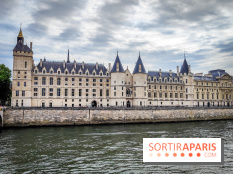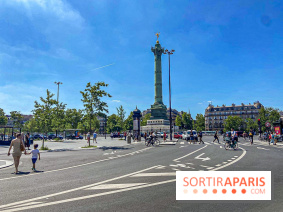In the heart of Paris, the Jardin du Palais Royal, located in the 1st arrondissement and extending over 20,850 m2, is an area of historic beauty and tranquillity, laid out as early as 1633. Framed by the Montpensier, Beaujolais, Valois and Jardin galleries, it is served by metro lines 1 and 7 at the Palais Royal - Musée du Louvre station, providing easy access to this "remarkable" garden. But among all its treasures, do you know why there are magnolias in the Jardin du Palais Royal?
It was in 1992 that these majestic trees with their crimson blossoms took root here, on the bold and poetic initiative of Jack Lang, then Minister of Culture, who entrusted the redefinition of this green space to Mark Rudkin, a Francophile American landscape architect. Under Rudkin's guidance, the garden underwent a slight but significant metamorphosis, with the addition of sixteen magnolias, accompanied by roses and dahlias, scattered at the ends of two large lawn beds. Benches have also been installed, inviting the public to fully immerse themselves in the tranquility and beauty of this reinvented setting.
The decision to introduce magnolias, a species previously absent from the garden, remains shrouded in mystery. Aymeric Peniguet de Stoutz, administrator of the Domaine National du Palais-Royal, reveals that Rudkin envisaged this change as a delicate recomposition of the site, choosing soft tones of white, pink and blue for his new plantings. This choice marks a notable distinction from the evergreen, white-flowered magnolias of America. The Asian magnolias chosen by Rudkin are characterized by their deciduous leaves and crimson flowers, offering a natural spectacle of rare intensity, made all the more remarkable by the fact that flowering precedes the appearance of foliage.
The introduction of magnolias to the Jardin du Palais Royal is not just a matter of aesthetics; it also reflects a desire to bring a new poetic and sensory dimension to this historic site. Every spring, the magnolia blossom becomes an event in itself, attracting Parisians and visitors alike, as well as photographers and Instagrammers, who come to admire and immortalize this explosion of color and renewal that symbolizes the arrival of fine weather.
Unfortunately, when we visited, access to the garden was closed due to a guards' strike. However, we were able to take a photo of the garden from a distance. Now accessible again, it's time to take advantage of this sublime bloom for just a few more days.
The Jardin du Palais Royal, with its historic statues, sun cannon and Wallace fountain, remains a place where history meets everyday life, and where we love to relax in the first ray of sunshine. The story of the magnolias adds to the rich history of this garden, enriching the cultural and natural heritage of Paris. It's a reminder of the city's ability to evolve, welcoming the new while preserving and enhancing its heritage. The magnolias of the Palais Royal (by the hundred...) have thus become much more than a simple botanical attraction; they are the symbol of a harmony between tradition and innovation, between nature and culture, in the heart of the French capital. Now's the time to admire them before they're gone.
Dates and Opening Time
From March 20th, 2024 to March 27th, 2024
Location
Palais Royal Garden
2 place Colette
75001 Paris 1
Prices
Free
Official website
www.domaine-palais-royal.fr



























